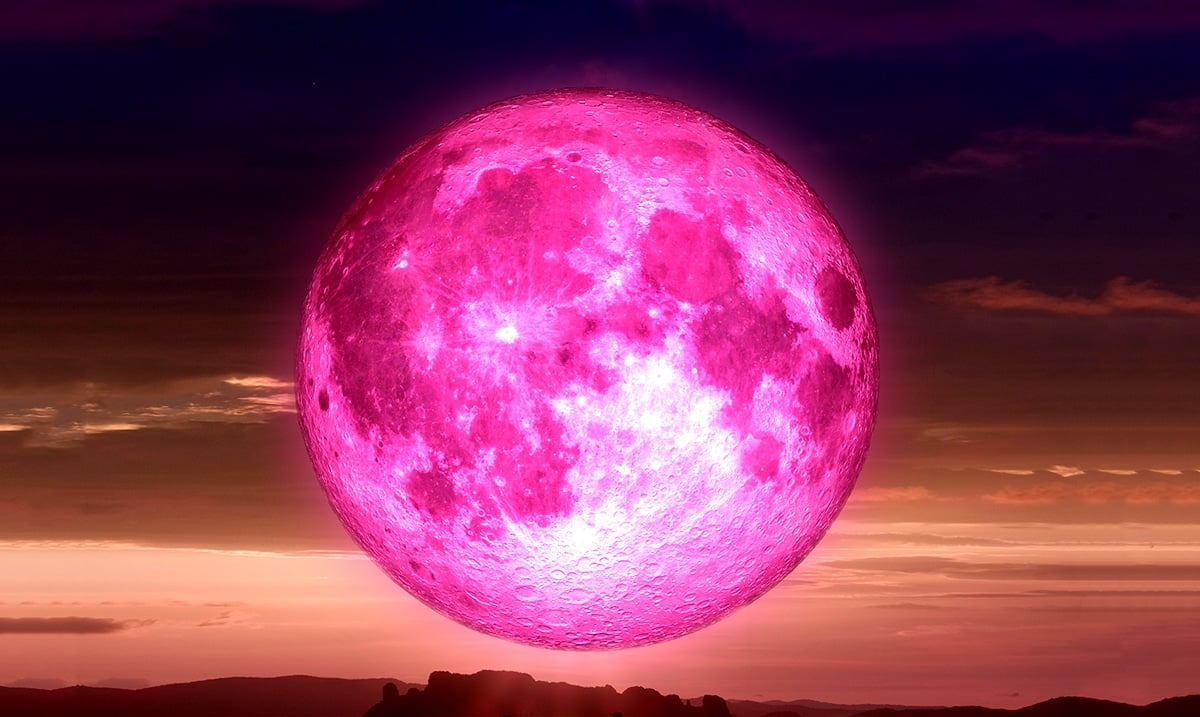As we move into April we are also nearing the date of the next full moon. This full moon will be on the night of the 7th and, according to Farmer’s Almanac will be a pink moon because while the moon itself will not be pink, it will be happening during the time that early spring blooms begin. You see, each full moon of the year has its own name that comes from long ago.
This full moon will also be a supermoon which means it will be exceptionally bright and it’s actually expected to be the brightest full moon we see in 2020. According to Yahoo News, it is considered a supermoon because of how close it is going to be to our planet when it occurs. You see when the moon reaches the apogee (the point closest to Earth) while it isn’t bigger or brighter it appears to be bigger and brighter.
This moon should be visible just after sunset on the night of April 7th and will be quite the treat for all who wish to view depending on how the night sky ends up being. For a few days following this actual full moon because of how close it will be the moon may still look full. If you live somewhere with open skies, chances are you’ll get a great view of this marvelous moon.
Earth Sky reported as follows on this topic:
The moon will appear plenty full to the eye for these next few evenings. Astronomically speaking, though, the moon is said to be full at a well-defined instant: when the moon is 180 degrees opposite the sun in ecliptic longitude. This full moon instant comes on April 8, at 2:35 UTC. (at United States’ time zones, the moon turns precisely full on the evening of April 7, at 10:35 p.m. EDT, 9:35 p.m. CDT, 8:35 p.m. MDT, 7:35 p.m. PDT, 6:35 p.m Alaskan Time and 4:35 p.m. Hawaiian Time.
In other words, the moon reaches its full phase when the moon-sun elongation equals 180 degrees. Click on The Moon Tonight to find out the present moon-sun elongation, remembering that a positive number depicts an waxing moon and a negative number a waning moon.
This April full moon showcases the biggest and closest full moon of 2020. That’s because, in the year 2020, this April full moon is the one that most closely aligns with lunar perigee. Amazingly enough, 14 returns to full moon almost exactly equal 15 returns to lunar perigee. The mean lunar month (as measured from full moon to full moon) equals 29.53059 days whereas the mean anomalistic month (as measured from perigee to perigee) equals 27.55455 days.
This will be the biggest supermoon of the year which is amazing considering the number of supermoons we have set throughout 2020. If you have a telescope and a proper lense taking photographs of this mesmerizing event might be a good way to pass the time during this pandemic we’re facing. I for one will be viewing the moon from where I am and cannot wait to see it, in all of its glory.

